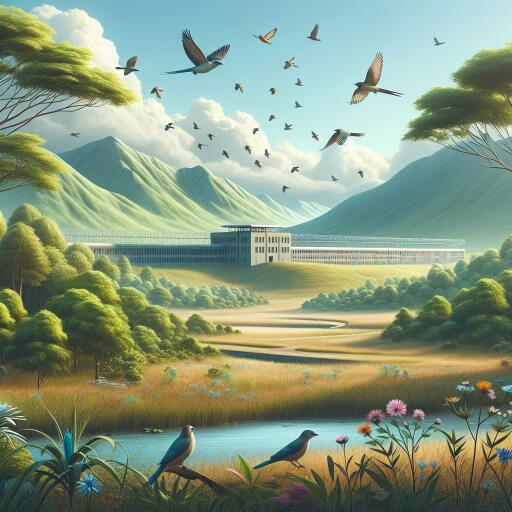
Could the Solution to Australia’s Prison Problem Lie in Birdsong and Open Space?
In the vast open spaces of far west New South Wales, a groundbreaking initiative is breathing new life into both the land and those who tend to it. Away from the high walls and rigid routines of incarceration, a group of men from the Broken Hill Correctional Centre are experiencing something transformative amidst the sounds of birdsong and the hum of the natural world around them. This fusion of conservation work and rehabilitation might just hold the key to addressing some of the systemic issues plaguing Australia’s prison system.
The project, set on a sprawling 60-hectare former recreational site near Broken Hill, now serves as a bastion of hope and healing. Here, individuals like Andrew (a pseudonym used for privacy), find solace and a sense of purpose in tasks that range from environmental restoration to the cultivation of native plants. This shift from confinement to the cathartic beauty of the natural environment is offering not just an escape, but a profound sense of belonging and contribution.
Australia’s struggle with high rates of recidivism highlights a glaring problem: the current penal system’s apparent inability to foster genuine rehabilitation. With a staggering 60 percent of incarcerated individuals finding themselves behind bars again, the call for a more effective approach has never been louder. Criminologist Lorana Bartels points out a critical flaw: “If we were doing everything right, people would go to prison once…and they wouldn’t go back. That’s just not happening at the moment.”
This unique partnership between Corrective Services NSW and the non-profit organisation Broken Hill Landcare represents a hopeful shift towards addressing these issues. Early into the project, the enormity of the task seemed daunting, but with the help of volunteers from the prison, progress has been steadily made. For these men, including a significant number of Indigenous individuals who are disproportionately affected by the justice system, the project serves as a bridge to reconnecting with their culture and the land—an aspect largely lacking in traditional correctional programs.
Bartels, who has extensively worked with Indigenous communities, emphasizes the importance of this connection, highlighting the healing effect it can have not just on the individuals participating but as a potential solution to the broader systemic issue of Indigenous over-representation in the criminal justice system. Programs like these not only serve to rehabilitate the land but also to instill a sense of pride, purpose, and hope in those involved.
For someone like Andrew, the project has been a harbinger of change, offering him new skills like welding and a renewed outlook on life. He fantasizes about the day he can bring his family to the site, showcasing the tangible outcomes of his hard work and dedication. The project’s future plans include expanding to a biodiversity reserve and recreational area, complete with a nursery and educational activities—a testament to the healing power of nature and community engagement.
As the initiative gains traction, the prospect of providing employment opportunities to participants post-release is being explored. This approach not just aids in the physical restoration of the natural environment but also plays a crucial role in the personal rehabilitation of the individuals involved, offering a glimmer of hope for a new beginning.
The Broken Hill project stands as a beacon of what’s possible when rehabilitation programs transcend conventional boundaries, embracing holistic methods that heal both the land and the people. In the quest for a solution to Australia’s prison dilemma, perhaps the answer lies in the open spaces and the songs of birds—where walls become horizons, and the seeds of change are sown with each shovel of earth.





Leave a Reply